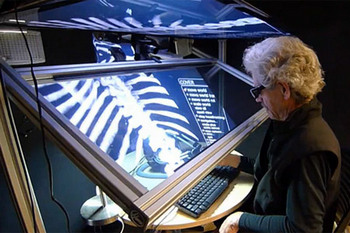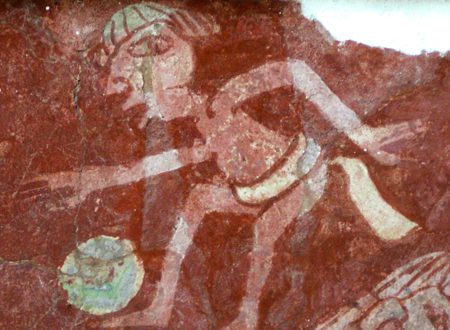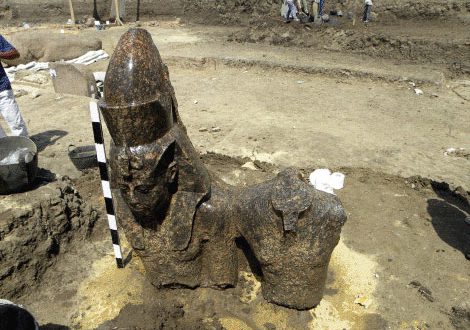 Egyptian archaeologists discovered a 4400-year-old tomb, south of the cemetery of the pyramid builders at Giza, Egypt.
Egyptian archaeologists discovered a 4400-year-old tomb, south of the cemetery of the pyramid builders at Giza, Egypt.
In a statement, Egyptian Minister of Culture Farouk Hosny, said the ancient Egyptian tomb was unearthed during routine excavations supervised by the Supreme Council of Antiquities (SCA) near the pyramid builder’s necropolis.
The recently discovered tomb belongs to a priest named Rudj-Ka (or Rwd-Ka), and is dated to the 5th Dynasty – between 2465 and 2323 BC.
Dr. Zahi Hawass, Secretary General of the SCA, said that Rudj-Ka had several titles and would have been an important member of the ancient Egyptian court.
Rudj-Ka was a purification priest serving the mortuary cult of Khafre (2520-2494 BC), the 4th Dynasty pharaoh who built the second-largest pyramid at Giza.




Thanks to a group of priests and administrators who were provisioned through royal endowments, Khafre’s pyramid complex and mortuary cult remained functioning well after the death of the famous pharaoh responsible for the second-largest pyramid at Giza.
The tomb of Rudj-Ka is the first to be found in this specific area, and – as Dr Hawass explained – it is “very unique because of its distinguished architectural design.”
The superstructure of the tomb is constructed out of limestone blocks, which create a maze-like pathway to its main entrance.
The burial chamber itself is cut directly into a cliff face.
The tomb walls are decorated with painted reliefs featuring Rudj-ka and his wife in front of an offering table filled with gifts of bread, goose and cattle.
Other murals contain daily lifes scenes, which show Rudj-Ka fishing and boating.
“This tomb could be the first of many in the area. Hopefully we have located a new necropolis dedicated to certain members of the royal court,” said Dr Hawass.
The antiquities tzar and Chasing Mummies star also suggested the area could be a continuation of the western necropolis at Giza – resulting from overcrowding at the Giza plateau.




